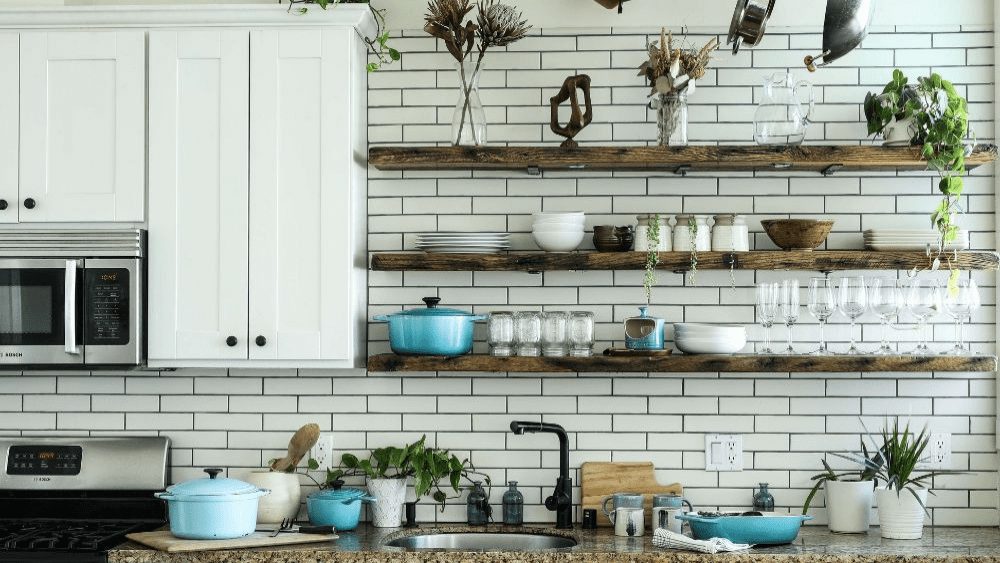
In our previous article, How To Hire an Interior Designer, we shared our insights into some hiring basics and good questions to ask to find the right designer for you. So now that you’ve hired an interior designer, it’s important to know how to work together to achieve the interior of your dreams.
What can you do to ensure great results? Here’s what interior designers want you to know:
Prepare and Plan Ahead
If you completed all of the steps and have now hired an interior designer, then you can pretty much skip this part. If not, here’s a quick recap:
- Create a mood board (Pinterest was made for this!) to give your interior designer a clear understanding of the look and feel you’re going for, what colors you love and any particular types of materials or pieces you want to incorporate.
- Prepare a list (with photos) of your current pieces that must be incorporated, but don’t be overly sentimental about it. Be willing to part with something if a look of abject horror comes over your interior designer’s face.
- Have a clear idea of how the space will be used. Part of an interior designer’s job is to make a space suit you and your lifestyle, so being upfront will help them create a space that really works for you
Also keep in mind that if your designer is in demand, your project may not start for another six or more months. Plan and hire ahead so that things will happen according to a schedule that works for everyone.
Regardless of whether you’re renovating your current home or simply browsing homes for sale because you want to move, it’s important to involve your interior designer as early as possible in the process. This will save you money and time in the long run.
Put It All Out There
- Dislikes
“Communicate your likes and dislikes in any way you know how, whether visual or verbal,” suggests David John Dick of DISC Interiors. After reviewing your mood board, your interior designer should have a good idea of what you like. If you know what you don’t like, be sure to share that information, as well. Your designer will likely run ideas by you throughout the design process, and don’t be afraid to say if you don’t like something. If they didn’t want to know, they wouldn’t ask! If there are two adults in the home with differing opinions, don’t put your interior designer in the position of go-between or mind-reader or (worse) relationship counselor. Communicate your common ground and not just one person’s view. - Budget
You probably don’t have an unlimited amount of funds at your disposal, so be clear about your budget for the project. A good designer can work with just about any budget. It’s also helpful to know in advance that certain items will cost a bit more if you want them to last, so don’t balk at spending on items like sofas, beds and dining tables. The old proverb goes “buy cheap, buy twice,” which means you’ll probably end up spending more in the long run if you go that route. - Policies
Ask the designer to put it all out there, too. Know what their policies are regarding revisions, payment, communication, etc. Also ask for an estimated timeline for the entire project.
Keep Communicating
- Be honest
Keep on sharing what you do and don’t like when asked. If you hate something, say so. Even if your designer is initially offended, ultimately you are the one who will be living there and they want you to be happy. Really! Keep those lines of communication open. However, once the project gets started, refrain from sending more designs and ideas. Interior designer Max Humphrey agrees: “I like a client who can pick out a few tear sheets or Pinterest pins but, once we decide on a direction, can stick with it and stay off the internet for the rest of the process.” - Preferred channels
Figure out your preferred channels of communication. If your designer will get the quickest replies from you by texting, let them know. Also, find out the best way to contact them for a quick response. - Decide quickly
Slow decision making will slow down the entire project. When your interior designer asks for feedback, respond within 24 hours. Indecision that results in being presented with a ton of options and revisions is also expensive because you are paying the designer for that time. And yes, time is money!
Respect the Rules
- Business hours
Even if your designer doesn’t specify that they only work within standard business hours, be respectful of their off-time. “As an interior designer, I form close relationships with clients because the nature of the job is very intimate,” says interior designer Katie Hodges. “But I wish clients understood that there are times (such as at 10 p.m. on a Sunday) when I am off duty.” Limit texts and phone calls to standard business hours and days. Outside of those days/times, send an email or wait until a more appropriate time. - Revisions
Hopefully your designer laid out all of their policies with you before getting started, including how many revisions they will do and when. If not, only ask for revisions during the design phase. “Once the client enters into the purchasing phase, changes and exchanges may not be allowed by vendors,” explains Dick, “so it’s important to understand your designer’s vision before proceeding, and to read all invoices and contracts.” If something feels wrong during execution, of course you should say so, but the easiest and least costly time for revisions is during the early stages of design. - Payments
Make all payments on time and in accordance with your contract. Anything else is just plain wrong and will stall or even end your project.
Be Patient
- Big projects take time
If your entire interior is being designed, you’re looking at six to nine months. Your designer likely built extra time into the projected timeline to account for unexpected delays, so things are fine if you’re still on this side of the anticipated deadline. - Account for lead time
If anything is being custom designed and manufactured for you, or is available in limited quantities because, say, the particular fiber that fabric is made from is only harvested on the third night of the third month every three years (hey, it could happen!), be aware that it may take some time for it to arrive after the order has been placed.
Put Your Trust in Your Interior Designer
This one’s a biggie. If you did your due diligence and hired an interior designer you clicked with and feel great about, this shouldn’t be too difficult. Remember, your designer is a professional. They know what they are doing. If they strongly suggest something, listen to them. If they tell you your idea for a retractable rug is ridiculous, that’s because it is.
Interior designers understand how all of the bits and pieces will fit together to create the space you want. Lacking their experience, you probably don’t have that same perspective. Don’t be afraid to give your designer the space to do something that’s a little bold for you. “I think the best types of clients are those who have their own style but hire an interior designer to bring something new and refreshing to the table,” says Hodges.
Sometimes those unexpected features turn out to be favorites!
Once the designs have been finalized, it’s time to let go and let your interior designer do the job you hired them to do.

For the last 16 years, Rachel Kinbar has been a writer of articles, blog posts, white papers, essays, infographics, web copy, sales copy, scripts, poetry, lyrics, and more. She has keen research skills that she applies to a wide variety of topics, and she especially loves topics related to design, history, and sustainable living.

 How to Hire an Interior Designer for Your New Home
How to Hire an Interior Designer for Your New Home